Cellular carriers bring 5G blitz to SoFi Stadium for Super Bowl LVI - Stadium Tech Report (original) (raw)
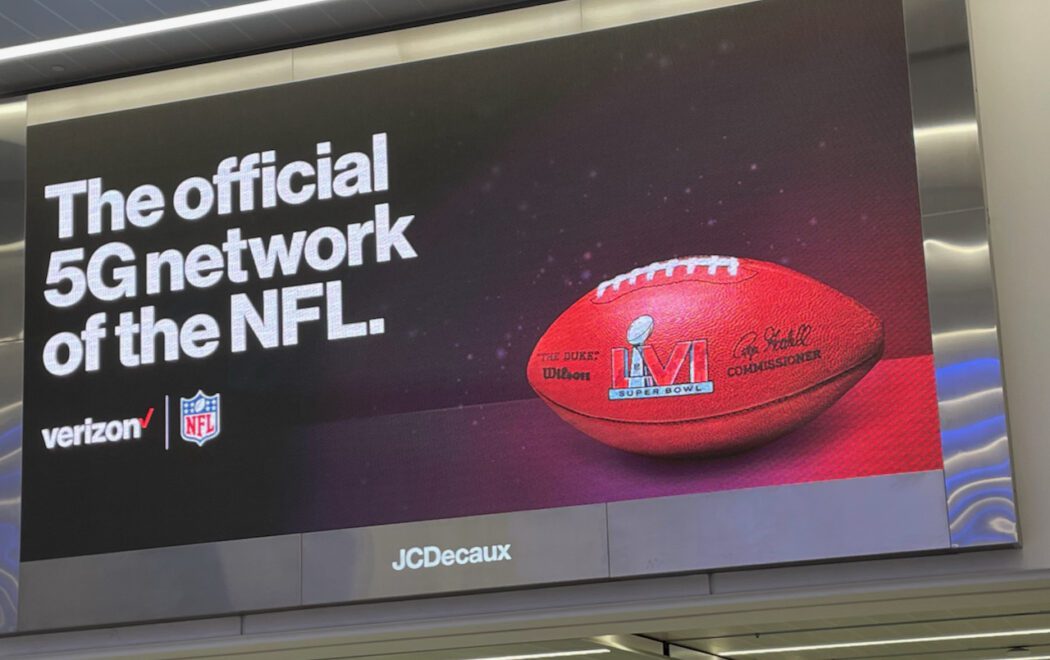
Fans attending Sunday’s Super Bowl LVI at SoFi Stadium in Los Angeles should have no problem getting a 5G cellular connection, since all the major wireless carriers have done their best to fill the venue with as much 5G gear as possible.
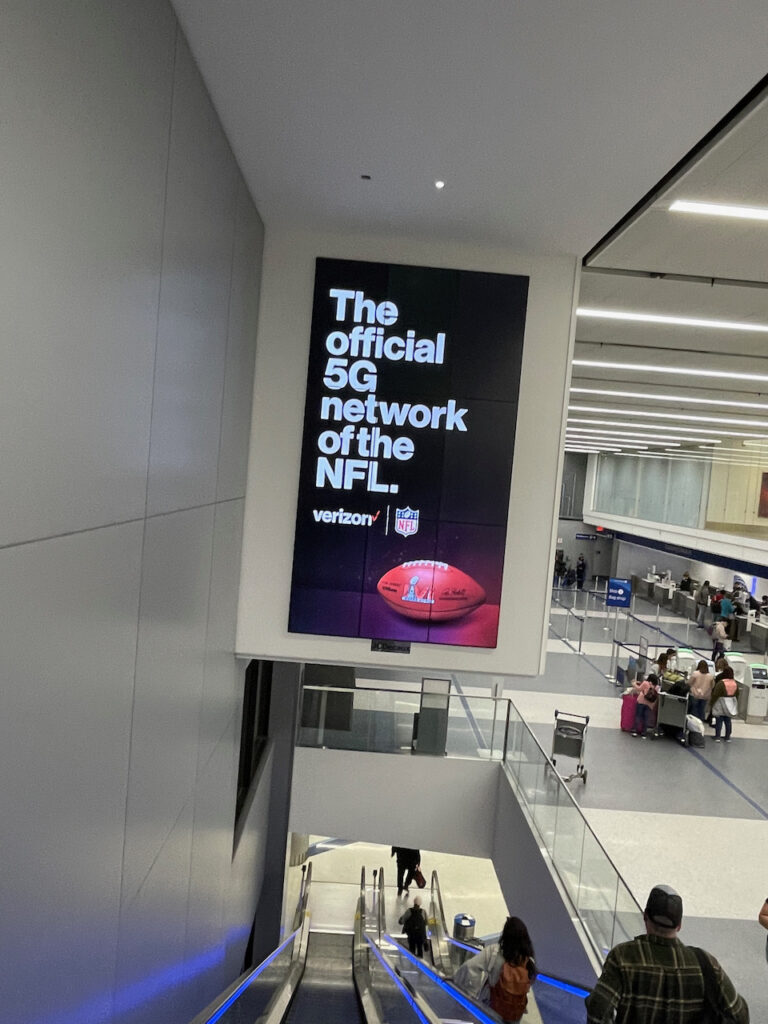
The Super Bowl’s 5G promotional blitz greets fans as they arrive at LAX airport. Credit all photos: Paul Kapustka, STR
While the all-in blitz by the country’s three major wireless carriers will easily make SoFi Stadium and the Super Bowl the most 5G-connected event ever, what may be the most interesting question from a venue-operations standpoint is how many of the 70,000-plus fans in attendance will actually use the services. If nothing else, the cellular connectivity experiment should be an interesting one since it combines the most 5G network resources with a crowd that is more likely to have the latest phones in hand, devices capable of making a 5G connection.
It may not be a Super Bowl prop bet in Vegas, but it’s an easy prediction to guess that Super Sunday will see representatives from Verizon, AT&T and T-Mobile all take to social media with reports of “screaming fast” 5G connections inside the stadium, most likely in the gigabit-per-second-plus range. To be sure, the potential of 5G speeds and low latency is attractive to anyone trying to use a mobile device. But what may be most interesting about 5G performance at this Sunday’s game is whether or not the increased capacity will attract more users, and how 5G services respond to a large volume of simultaneous users in a confined space.
Will cellular customers find and use the 5G services?
While 5G services have been deployed into many venues over the past few years, most of the installations have been only partial deployments, many in trial-type installations. What’s different for Super Sunday is that all the carriers will have 5G services available across their entire spectrum portfolios, from low-band through mid-band to high-band millimeter wave. The catch, as it always has been for 5G services, is whether or not the user has a phone capable of connecting. Apple, for instance, only supported 5G starting with the iPhone 12, which means that users of iPhone 11 and older devices are out of 5G luck.
Many fans may also choose to use the stadium’s Wi-Fi network, which has already produced record results at games and events this season.
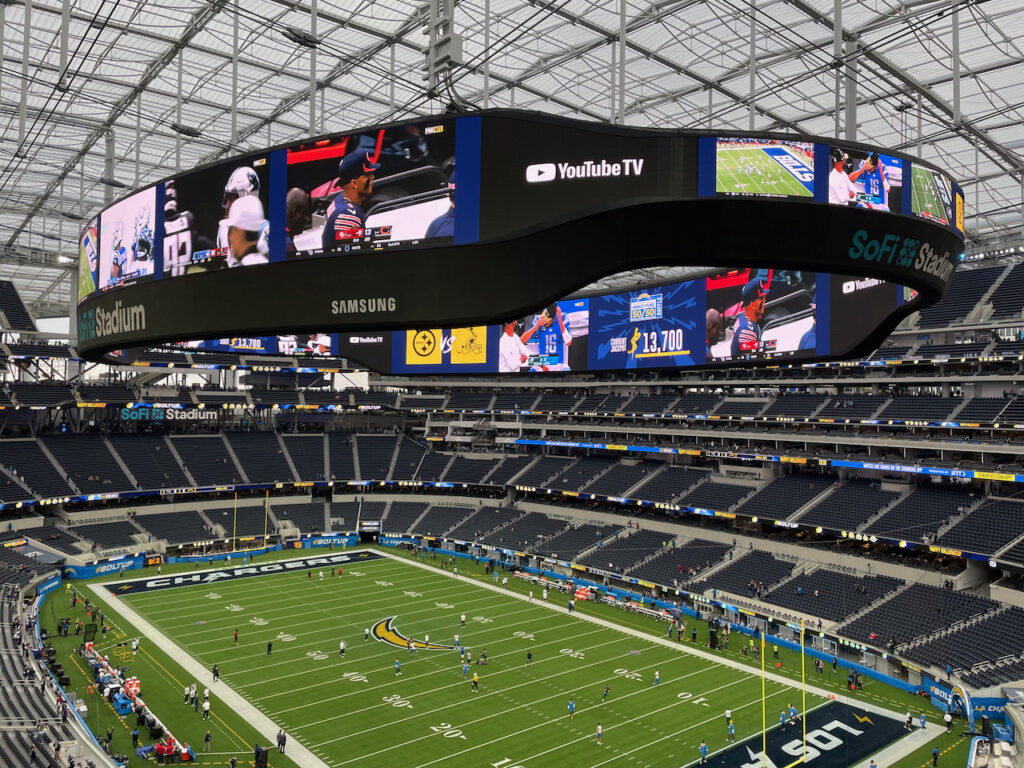
Verizon and AT&T have 5G antennas inside the videoboard, to help cover the seating bowl.
According to Stacey Thompson, AT&T’s vice president for access-construction and engineering, a typical stadium crowd might see 15 percent of users connecting via 5G services on AT&T’s network. But demographically, the Super Bowl is hardly a typical crowd, given the high cost of attending the game. So with a wider range of 5G services available and a potentially higher concentration of 5G-capable devices, Sunday’s statistics could push new boundaries for the 5G providers.
“With the crowd at the Super Bowl the potential for 5G devices is a little bit higher,” said Thompson in a phone interview. “It’s going to be intriguing to see how the data comes out.”
Brian Mecum, vice president of device technology for Verizon, thinks that 5G adoption is gradually happening at stadiums, mainly via fans watching other fans do new things on their phones. Part of Verizon’s huge Super Bowl 5G promotions include its “5G multi-view” app which provides seven different camera angles for fans at the stadium to watch live action, and an augmented-reality game which lets fans flick virtual footballs into a virtual truck that is driving around the field.
“You used to learn things from rumors, now you just watch someone else doing it and you pick it up,” said Mecum during an interview at Verizon’s pre-Super Bowl media event in Los Angeles this past week. While Mecum agreed that there still may be some user inertia to overcome — like fans who still may think their phone won’t work at a game — he also thinks that the tide is turning and that events like Sunday’s can help make converts out of previous non-believers.
“As people become more familiar with what their phones can do, they trust it more,” Mecum said.
CBRS, C-Band and 4G LTE as well
By virtue of its billion-dollar 5G sponsorship deal with the NFL, Verizon will be front of mind on the promotional side, with messaging greeting fans starting as they arrive at LAX airport. Verizon is backing up its ads with a large amount of network firepower on the 5G side, including deployment of signals in the mid-range C-band as well as using CBRS frequencies for carrier aggregation, a technique where bands from different frequency levels are combined to increase throughput. According to Mecum, Verizon has more than 472 5G nodes deployed throughout SoFi Stadium, easily the most for any single venue it covers.
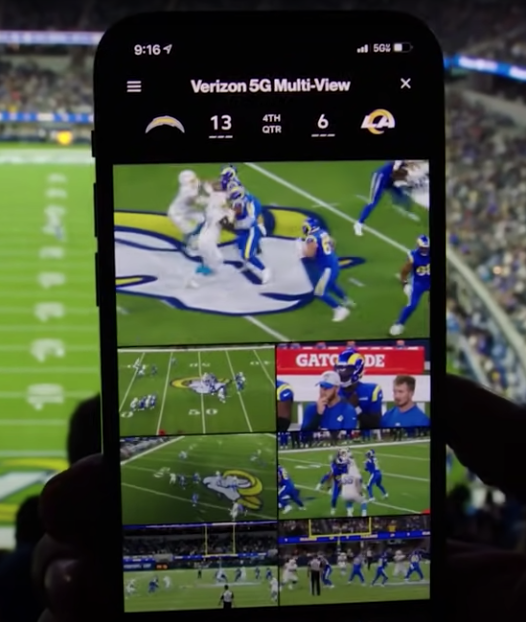
Verizon’s 5G Multi-View app provides seven different views for fans at the stadium. Credit: Verizon
AT&T’s Thompson said AT&T will also have 5G coverage through low-band, mid-band and high-band spectrum. Like Verizon, AT&T has placed a number of its millimeter-wave antennas inside the infrastructure of the stadium’s videoboard, the Infinity Screen by Samsung. Since millimeter-wave antennas require direct line of sight for best reception, having something hanging in the middle of the stadium was beneficial for both carriers in helping send signals out to the seating bowl.
T-Mobile, which uses different spectrum bands than AT&T and Verizon, said it will have its 5G services available at 2.5 GHz, 24 GHz and 39 GHz. And all three carriers are fully participating on the stadium’s 4G LTE DAS, which is one of the largest ever built. The DAS, using gear from JMA Wireless and designed by JMA with deployment partner DAS Group Professionals, has approximately 2,400 antennas and 3,200 remotes, and is unique in that is the first stadium DAS we know of that is running neutral-host 5G signals, here in the C-band spectrum. The DAS is capable of covering all licensed spectrum bands between 600 MHz to 6 GHz, according to Skarpi Hedinsson, chief technology officer, SoFi Stadium and Hollywood Park.
The DAS also uses approximately 24 MatSing lens antennas, with that number about evenly split between the stadium and the parking lots, according to Steve Dutto, president of DGP. Inside the stadium, the iconic MatSing antennas (which are basically big round balls) use their long-throw capability to cover areas like the YouTube Theater plaza and some of the higher concourse gathering areas, which have high open areas above them.
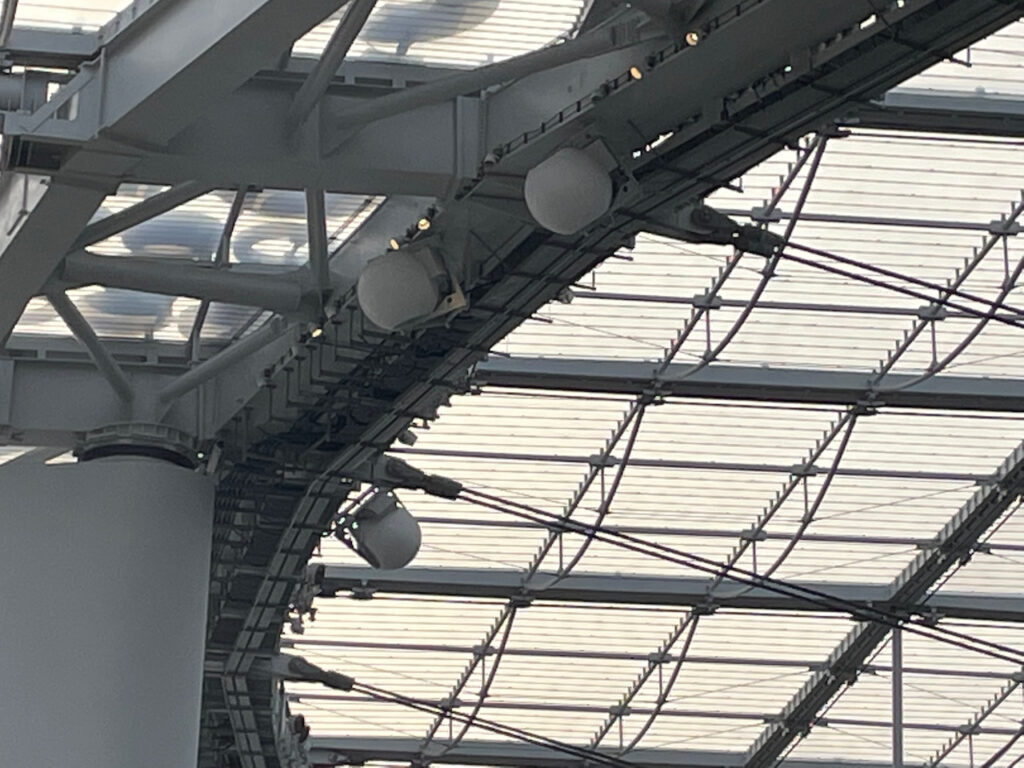
MatSing antennas provide cellular coverage to hard-to-reach areas like open plazas.

Paul Kapustka is Editor in Chief at Stadium Tech Report, the go-to publication for the stadium technology marketplace. A professional journalist for more than 35 years, Paul founded Stadium Tech Report in 2011. Stadium Tech Report provides objective, non-paid-for news, analysis and opinions on the stadium and large public venue technology marketplace.